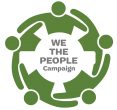Roll Your Own Program: Key Elements
| 1 |
We recommend that the organization driving the effort be a local non-profit (either a 501(c)(3) or 501(c)(4)) tax exempt organization. This system should exist to benefit all citizens of your service area equally. That is one of the key flaws of the current dominant financial ecosystem which favors the already wealthy. |
| 2 |
We recommend that you establish a digital banking system rather than one based on printed money. There are many problems with a paper money system and, given today’s digital infrastructure, it makes no sense to go any other way. However, be aware that if you establish a digital platform to manage complementary currency accounts and transactions, your organization must be registered as a Money Services Business (MSB) with the Financial Crimes Enforcement Network (FinCEN), a bureau of the United States Department of the Treasury. Any entity in the U.S. that issues and manages a complementary currency system must registerwith FinCEN as an MSB. It may then issue and manage as many different complementary currencies, and to serve as many different locations, as it wishes (as Sustainable Communities Foundation (SCFndn), sponsor of this site, has done). |
| 3 |
Many people ask us if they could use a cryptocurrency system to satisfy this objective. We strongly recommend against using a cryptocurrency system, even though it is digital. It is not the right tool for exchanging everyday currencies for the purchase of goods and services. Cryptocurrencies should be viewed as an investment vehicle (like digital stock and bonds) and not a tool for everyday money. One does not obtain dollars with the expectation of the dollars going up in value. Nor should your complementary currencies be used for profit. |
| 4 |
You should manage your complementary currencies with a robust banking system that functions just like conventional banks do when it comes to users establishing a checking account for receiving, holding and dispensing those currencies. You can build your own platform as SCC has done, or you can license software from independent third parties that provide complete banking packages for customers. Here are three potential vendors:
|
| 5 |
There are many moving parts to such a system, and it behooves you to learn from experts. For example, if you are contemplating using the Cyclos system, you might look into the services provided by ComplementaryCurriences.org, who work with Cyclos. The founders have extensive knowledge on setting up local complementary currency systems. |
| 6 |
When you issue your currency, we recommend that you both grant it (give it away or exchange it for labor) and sell it. Most local currency programs sell their currency in exchange for the national currency. However, we believe they all make one common mistake in doing so: When they sell their currency, they also commit to buying it back. That means the issuer must set aside funds received for the sale for potential redemption. Thus, they just swap one currency for another and do not increase the amount of money in circulation (a key factor in the health of a local financial ecosystem.) We recommend that you treat the sale as a one-way transaction, wherein the buyer has to spend the currency in the local economy. And the national currency received for the sale become free and clear income into your non-profit organization and increases the amount of total money in circulation with every sale. |
| 7 |
To facilitate commerce in the local currency, we recommend that, in addition to enlisting local merchants to accept the currency, you establish a local trading platform where users can buy and sell goods and services using the local currency. Most people are not aware that the “informal” economy (i.e., neighbor to neighbor) in many ways and in particularly financially, rivals the formal economy. And complementary currency programs are a perfect match with the informal economy, which is almost entirely local. Transactions from garage sales alone throughout the U.S. amount to a very large number of financial transactions that do not show up on GDP statistics. Craigslist, although only an advertising site (compared to eBay where one can purchase things online), nonetheless is a key driver in the local and therefore informal economy. According to this site, in 2022 Craigslist was the 67th most popular website in the world, 22nd in the U.S. and #1 in the classifieds segment … representing hundreds of billions of dollars in transactions. The problem with Craigslist is that users cannot purchase goods and services online with it, but have to meet face to face with sellers. eBay, in contrast, is all about buying things online. However, that does almost nothing for stimulating a local economy. Therefore, we recommend a hybrid of those two platforms – a Craigslist-like local advertising platform, but where the visitors can buy and sell goods and services online like eBay, using the local currency instead of dollars. |
| 8 |
Finally, to get a feel for putting these various parts together, we encourage you to check out this Guided Tour of the Sustainable Communities Framework (SCF), the turnkey complementary currency based economic development system that uses a complementary currency bank called Universal Exchange (UNIEX), developed by Sustainable Communities Foundation (SCFndn), which we can offer you in partnership with SCFndn as described here.
|
